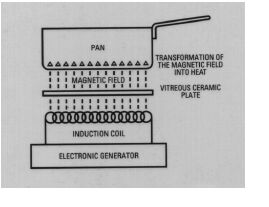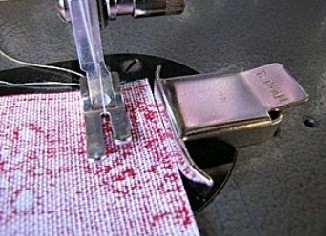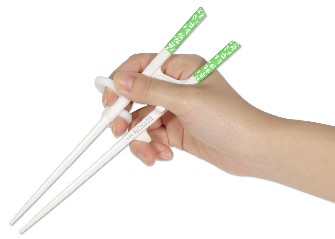Short Description
Induction cooktops provide fast, efficient cooking. They produce heat only within the pan itself. An induction coil just beneath the ceramic surface produces a magnetic field. This induces high frequency magnetic waves in the metal base of the pan, thus heating it. Energy is transferred directly to the food, eliminating the energy waste which generally occurs with conventional hotplates and boiling tops.
Models
The following section includes details of models that may be suitable for particular users. Models were assessed in collaboration with Choice for their Choice magazine August 2003. There is no guarantee that all models available on the market were assessed.
Four induction cooktops were tested: Asko, Brandt, AEG and Miele
. All four models were considered suitable for wheelchair users or those with an upper limb impairment
. None of the models could be recommended for a person with a cognitive impairment, especially the Asko. The Brandt has basic controls and would be easiest to understand
. For those with a visual impairment, the AEG and Miele have larger, bolder labelling
. All tested models operate at less power in the event of overheating, while the AEG and Miele will turn off after being on for an extended period.
. All touch controls were located at the front of the cooktop - within easy reach
More Details
. The ceramic cooktop under the pan does not heat up, although some heat is conducted from the pan back to the cooktop.
. Spilt cooking fluids do not burn onto the cool surface so less time and
energy is spent cleaning.
. The cooktop heats only the pan and not the kitchen so air temperatures remain lower.
. The absence of flames means safety from fire.
. Induction cooktops produce an instant rise in temperature within the pan which means faster cooking times for most food items.
. They are capable of detecting if a saucepan has boiled dry. Some models automatically turn off, while others turn down.
. Electronic controls allow the cooking to be finely controlled from gentle cooking to rapid boiling.
. Energy is consumed only when the pan is on the cooktop.
. Safer than conventional cooking.
. More expensive than other cooktops
. Hotplates in a parallel arrangement (square with 4 plates)
Factors To Consider
. The cooking pan must have a magnetic base eg. steel, cast iron or magnetic stainless steel. The heating mechanism is activated or stopped by placing or removing the pan on the ceramic hob.
. Element size - pots and pans need to be within, or close to, the diameter of the hotplates. Pans that overhang won't heat properly around the edges, and pans that are too small won't be recognised.
. Controls should be logical, and clearly show the power settings. there should be some sort of visual or physical separation from the hotplates. They should be located at the front of the cooktop within easy reach.
. Location of hotplates / elements - current models have a parallel arrangement of four hotplates (2 at the front and 2 at the back). Where possible, avoid having to reach over one hot cooking pan to reach another.
. Power on / residual heat light - this should be bright, visible and located near the controls. Each hotplate should ideally have its own indicator.
. Auto heat-up - this feature allows the hotplate to heat to a higher setting, then automatically turn down to a preset setting after a certain amount of time.
. Timer - "turn off" timers for at least some hotplates as well as a separate timer can be useful.
. Safety switching - look for models that automatically turn off or down in the event of overheating, and models that turn off if a hotplate has been left on for an extended period of time.
. Booster. Some models have a setting that produces very high heat, ideal for boiling water fast but too hot for cooking most foods. This may not be considered a necessary feature.



 subscribers
subscribers 






